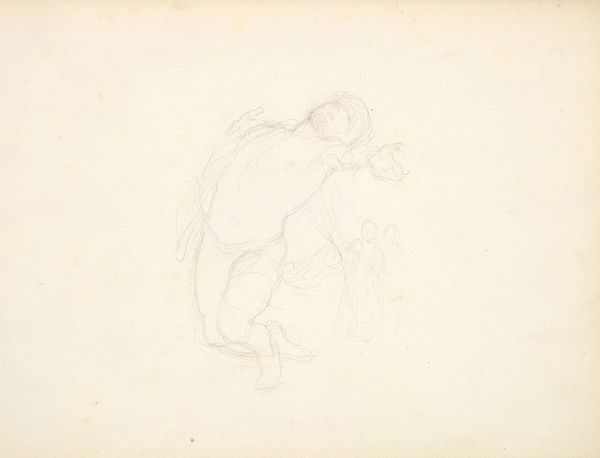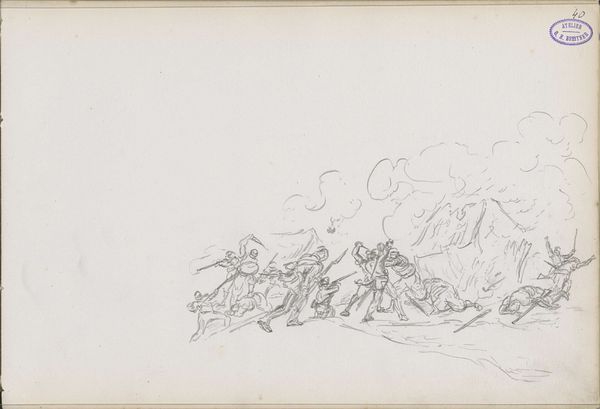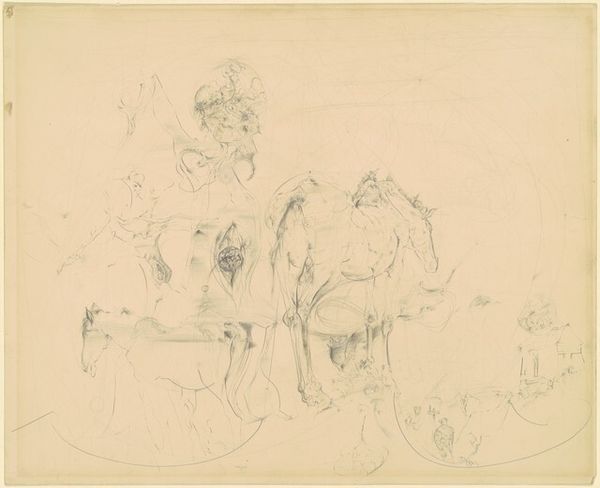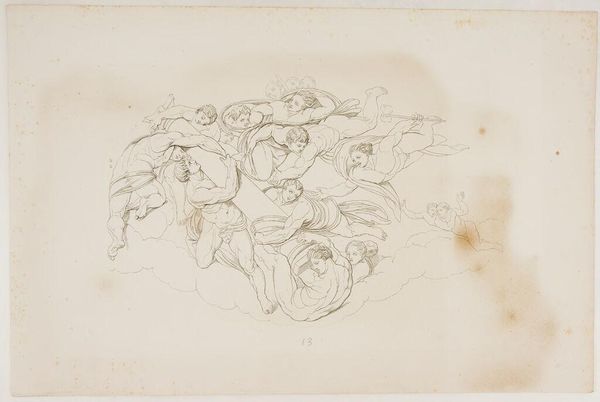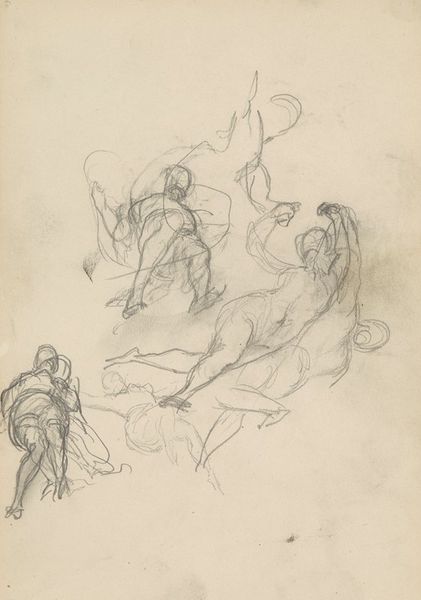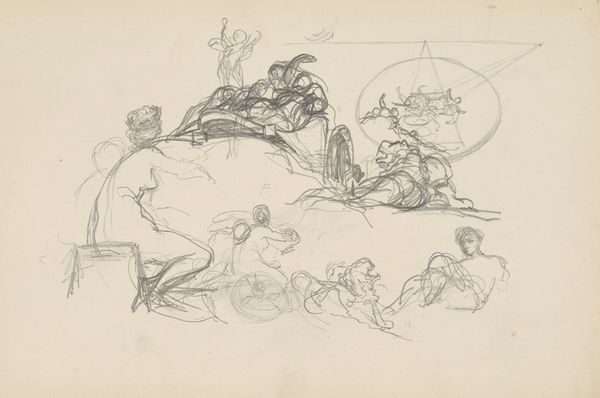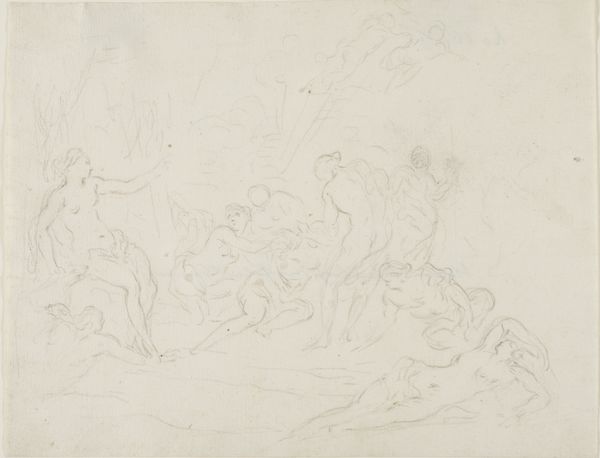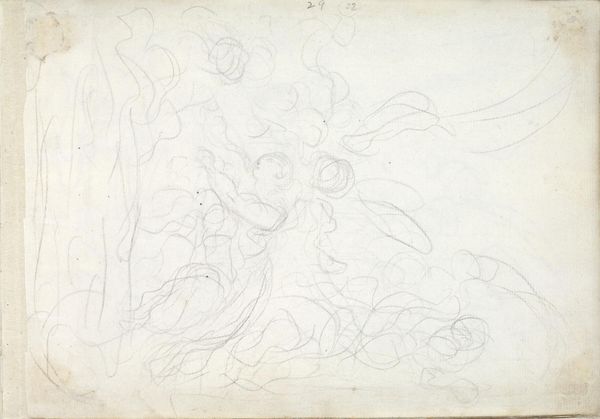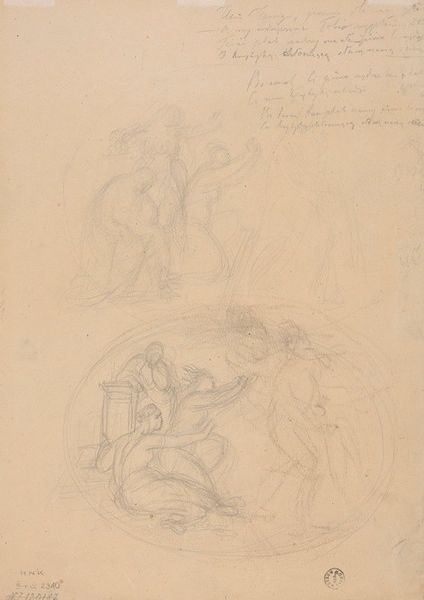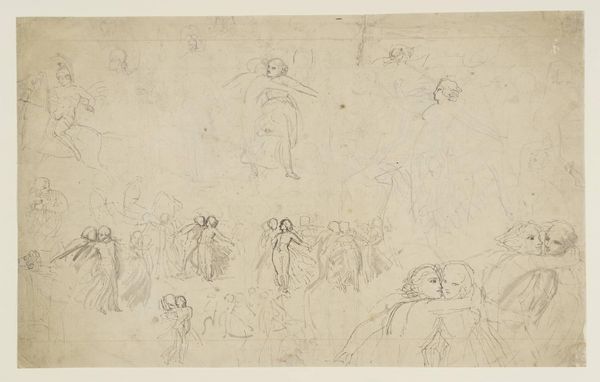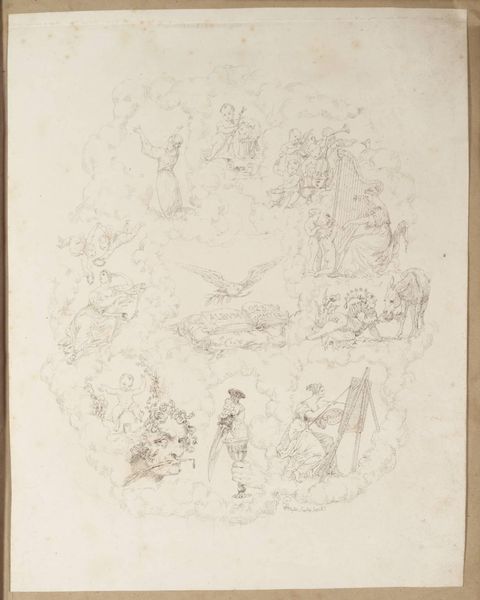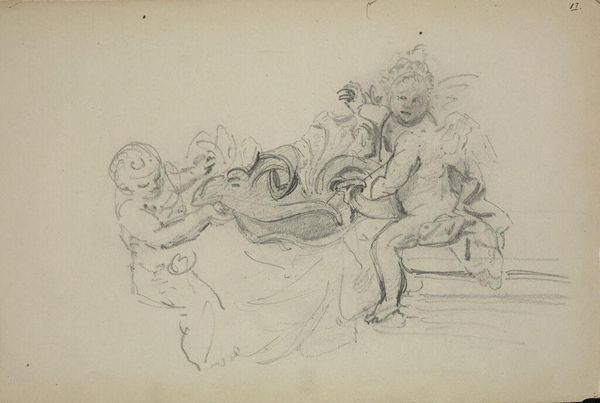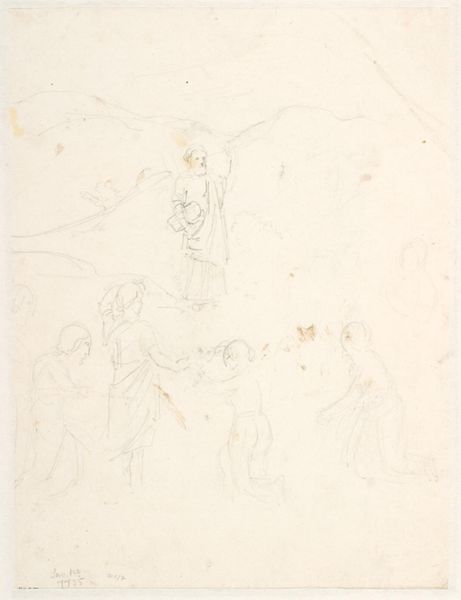
drawing
#
drawing
#
amateur sketch
#
light pencil work
#
pencil sketch
#
personal sketchbook
#
ink drawing experimentation
#
pen-ink sketch
#
sketchbook drawing
#
sketchbook art
#
fantasy sketch
#
initial sketch
Copyright: Public Domain: Artvee
Editor: So, here we have "A Group of Children," a drawing by Frederic Leighton from around 1849. It’s a pencil sketch, very light and preliminary. I'm immediately struck by how unfinished it feels, almost ephemeral. What do you see in this piece, considering its historical context? Curator: Well, viewing this through a historical lens, it’s crucial to understand Leighton’s aspirations and the Victorian art world. He aimed for high art, monumental works. This sketch, though, provides an intimate glimpse into his process. We must ask: What role did sketching play in the broader artistic culture? Sketchbooks were intensely personal spaces but, increasingly, also sources for developing "acceptable" public art. Do you think the loose and free rendering affected or reinforced ideas about spontaneity and naturalness valued at that time? Editor: That’s fascinating. I hadn't considered it as a study for something grander. Does this more intimate style of working undermine or support Victorian ideals in some way? Curator: Exactly. It complicates them. Victorian society valued finish and detail. But consider the art market – preparatory drawings could be sold or collected in their own right, offering artists another form of income, separate from formally exhibited pieces. The fact it’s unfinished almost acts as a window into the artist’s mind, providing a kind of authenticity. Do you think access like that changed public reception to his formally finished artworks? Editor: I suppose seeing the artist's process demystifies the final artwork to some extent. You begin to appreciate not just the polished end product, but the labour, the false starts. It also shows that even masters went through this stage. I learned so much about shifting public and market forces around sketches. Thanks! Curator: Indeed. Understanding the economic and cultural dimensions gives a far deeper reading than purely aesthetic considerations alone. Thank you, as well.
Comments
No comments
Be the first to comment and join the conversation on the ultimate creative platform.
